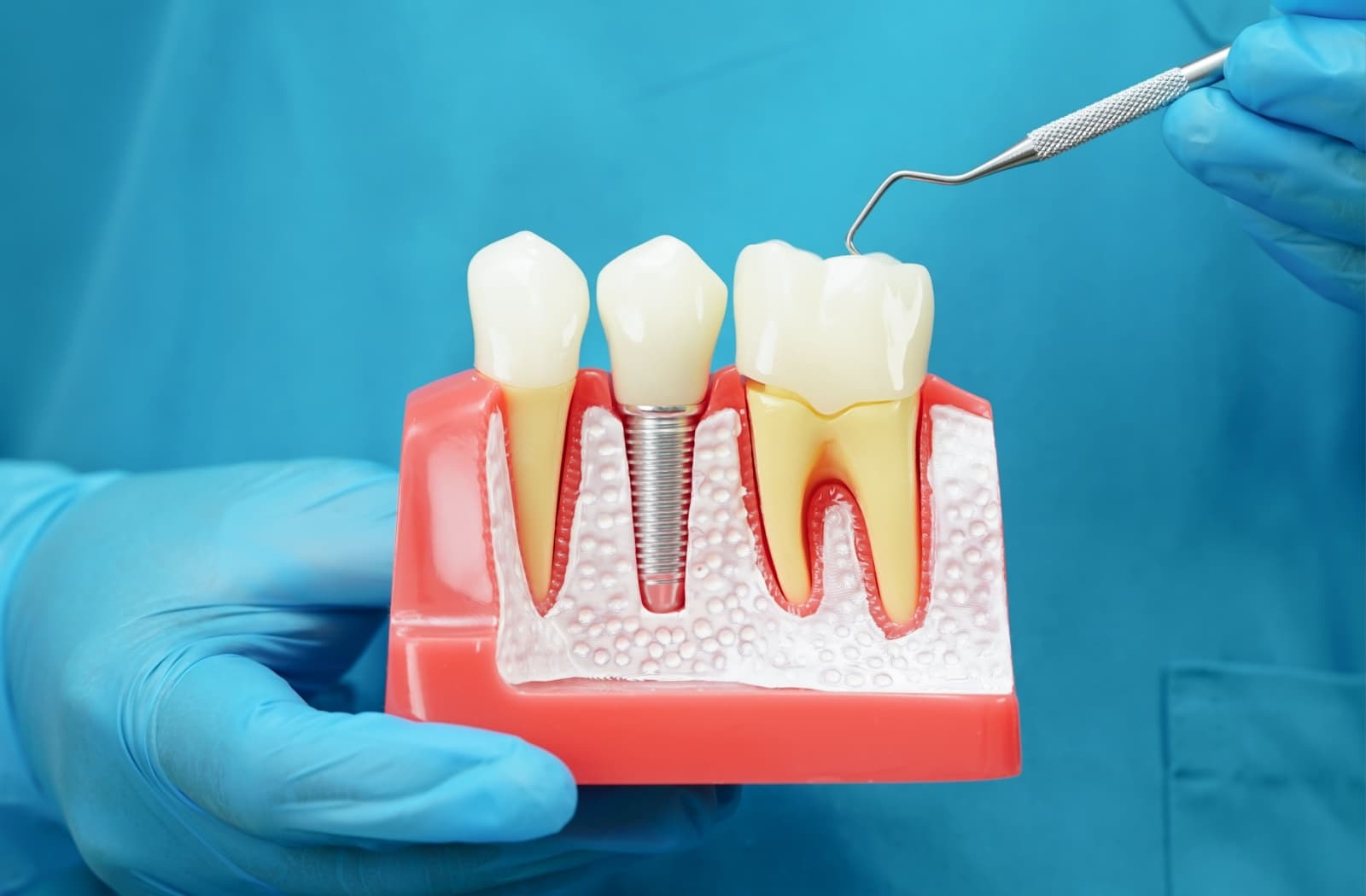
Are you a good candidate for dental implants? This option for replacing missing teeth offers many benefits, from more desirable aesthetics to improved chewing ability. Dental implants can also last a lifetime when maintained appropriately—just like your natural teeth.
However, not everybody is a suitable candidate for dental implants. Dentists generally don't recommend implants for people with substantial dental issues, including active or advanced gum disease (periodontal disease). The goal is to treat first so your restoration can last.
What Are Dental Implants?
Dental implants are artificial replacements for missing teeth, including the root (the part below the gumline). They consist of 3 parts: post, abutment, and restoration. Implants are usually made of titanium or ceramic. The procedure requires a healing period that can last more than 9 months.
Dental implants can fill in gaps in your smile to help improve eating and chewing. However, like all medical procedures, understanding the benefits and what is involved is crucial to choosing a solution that works for your oral health.
Are You & Dental Implants a Match?
Getting a dental implant is a relatively common procedure. Every year, around 3 million people in the United States receive dental implants.
The procedure can help people who have experienced tooth loss due to cavities, gum disease, anodontia (teeth that never developed), or bruxism (teeth grinding).
However, we want your restoration to last, which means working with a healthy mouth. Dentists generally don't recommend dental implants for people with substantial oral health problems, including active periodontal disease.
Implants are also unsuitable for young people under 18, as their jawbones may still be developing.
What is Periodontal Disease?
Periodontal disease (gum disease) refers to inflammation and infection of the gum tissue and bone structure that anchors your teeth. Gum disease symptoms include bleeding, halitosis (bad breath), recessed gums, and, in later stages, tooth loss.
Gum disease can also increase your risk of developing serious systemic diseases like cardiovascular disease, stroke, and diabetes.
While some people are more susceptible to gum disease than others, a significant cause of this condition is poor oral hygiene. No wonder your dentist keeps reminding you to floss!
Dental Implants & Your Gums
Dental implants can work and feel like natural teeth. However, just like natural teeth, you need to care for them daily to prevent gum disease. People with implants must floss and brush just like their other teeth.
Not doing so can put you at risk of peri-implantitis, which refers to inflamed gums and damaged bone around a dental implant. People with a history of gum disease have an increased risk of developing peri-implantitis.
While the precursor to peri-implantitis may be treated or even reversed, peri-implantitis often requires surgery.
Talk to your dentist if you have or have had gum disease. They can help you navigate whether dental implants are a good fit for your health and smile goals. However, you may need to treat the gum disease first or explore other options.

The Dental Implant Process
Getting a dental implant is a step-by-step process with 3 main stages.
1. Surgery (Root Placement)
To begin the procedure, your dentist will make an incision in your gum tissue and jawbone. Next, they will insert the implant (the artificial root) and close the incision with stitches.
Often, the abutment—the piece that connects the root to the visible part of your tooth—is placed at the same time. However, in some cases, you’ll need a separate appointment for this step, usually after the initial healing period.
2. Osseointegration (Healing Phase)
Osseointegration is the healing phase, and it will take 3 to 9 months, sometimes longer. During this phase, the jawbone merges with the implant. If the dental implant is at the front of the mouth, the dentist may install a temporary tooth so there are no visible gaps.
3. Restoration (Tooth Placement)
Once healing is complete, your dentist will attach the abutment (if they didn’t do so during the initial surgery).
Then, the final step involves placing your restoration (crown, bridge, or denture), which is the part visible above the gumline. Now, your dental implant looks just like one of your natural teeth!
Other Important Things to Know
Dental implants are a common procedure. Like any medical procedure, complications are uncommon but possible. These may include infection and damage to the sinuses, jaw, and nerves.
In general, people who shouldn't get dental implants include those who:
- Have uncontrolled, untreated, or active gum disease
- Have certain health conditions (bone disorders, autoimmune disease)
- Have a significant loss of jawbone
- Are smokers or vapers
- Are less than 18 years old, as their jaw may still be growing
Take Care of Your Teeth (Including the “Fake” Ones!)
Dental implants can last a lifetime—when they're adequately cared for. So, remember to take care of your teeth, even the artificial ones!
Tip: The American Dental Association recommends brushing your teeth twice daily for two minutes with fluoride toothpaste. You should also floss between your teeth every day, moderate your intake of sweet foods and beverages, and visit your dentist for regular check-ups.
Learn More Restoring Your Smile with Dental Implants
Dental implants can make a big difference when you want to restore your smile or enjoy your meals more comfortably. We can help answer your questions and set up a treatment that aligns with your goals.
Wildwood Family & Cosmetic Dentistry has served Toledo families for generations, helping our community restore their smiles. Contact us today to book your next dental appointment.